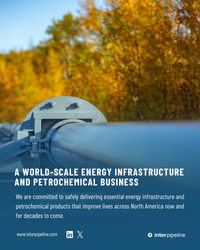While oil prices have risen in recent months, they are a far cry from the $100/bbl prices of two and half years ago, and there is certainly no guarantee they won’t fall back below $50. In other words, the survival of exploration and production companies continues to depend on razor-thin margins, and E&Ps must continue to pay very close attention to their capital and operating costs. Lease operating expenses—the costs incurred by an operator to keep production flowing after the initial cost of drilling and completing a well have been incurred—are a go-to cost component in assessing the financial health of E&Ps. But there’s a lot more to LOEs than meets the eye, and understanding them in detail is as important now as ever. Today we continue our series on a little-explored but important factor in assessing oil and gas production costs.
As we have noted in our series on E&P capital spending (Been Down So Long; You Go Your Way, I’ll Go Mine; and Different Strokes by Different Folks), there has been a sharp decline in capital spending over the past two years. But the decline in production during 2016 was nowhere near the magnitude of the capital-spending cut, and over the past few months U.S. production has been on the upswing. That’s because producers have improved their economics by improvements in drilling and completion (D&C) efficiencies and a focus on production “sweet spots”. This has allowed many E&Ps to survive—and even thrive—during this period of low prices (see Top 10 RBN Energy Prognostications for 2017, #8). But capital spending is only one part of the story on costs. Lease operating expenses—the costs to keep production flowing after drilling and completion—also play an essential role when it comes to assessing an E&P’s overall financial health. In Part 1, we covered the basics of what LOEs are (what’s in the LOEs “basket”), why they matter, and why reported LOEs should never be taken at face value. Today, in Part 2, we will look at the full scope of LOEs (to make sure we don’t leave anything out) —in some cases, LOEs get a bit tricky.
In Part 1 we provided a clear definition of LOEs to guide us through the process of determining what should and shouldn’t be included in LOEs:
Lease operating expenses are the direct and indirect costs incurred to maintain the production of a well on the path (trajectory along decline curve) consistent with the capital investment history of the well.
This includes the cost of running any existing equipment plus the cost of additional equipment as it is added later. We also pointed out how it’s hard to make apples-to-apples comparisons between the LOE figures presented by different E&P companies because there are no hard and fast rules about how E&Ps must present their LOEs. This doesn’t make LOEs a meaningless concept, though, because despite the differences in how E&Ps present LOE information, they all track and record their LOEs for internal accounting in very much the same way. So, rather than throw out LOEs altogether and say it’s hopeless, we need to learn how to look past the numbers they present and on to the details that can tell us what the LOEs really are.
The Full Scope of LOEs
Join Backstage Pass to Read Full Article










